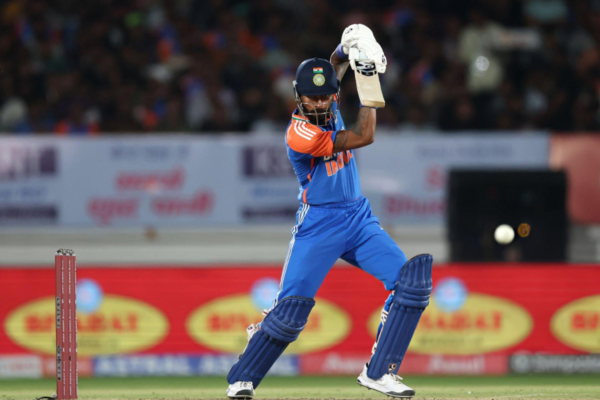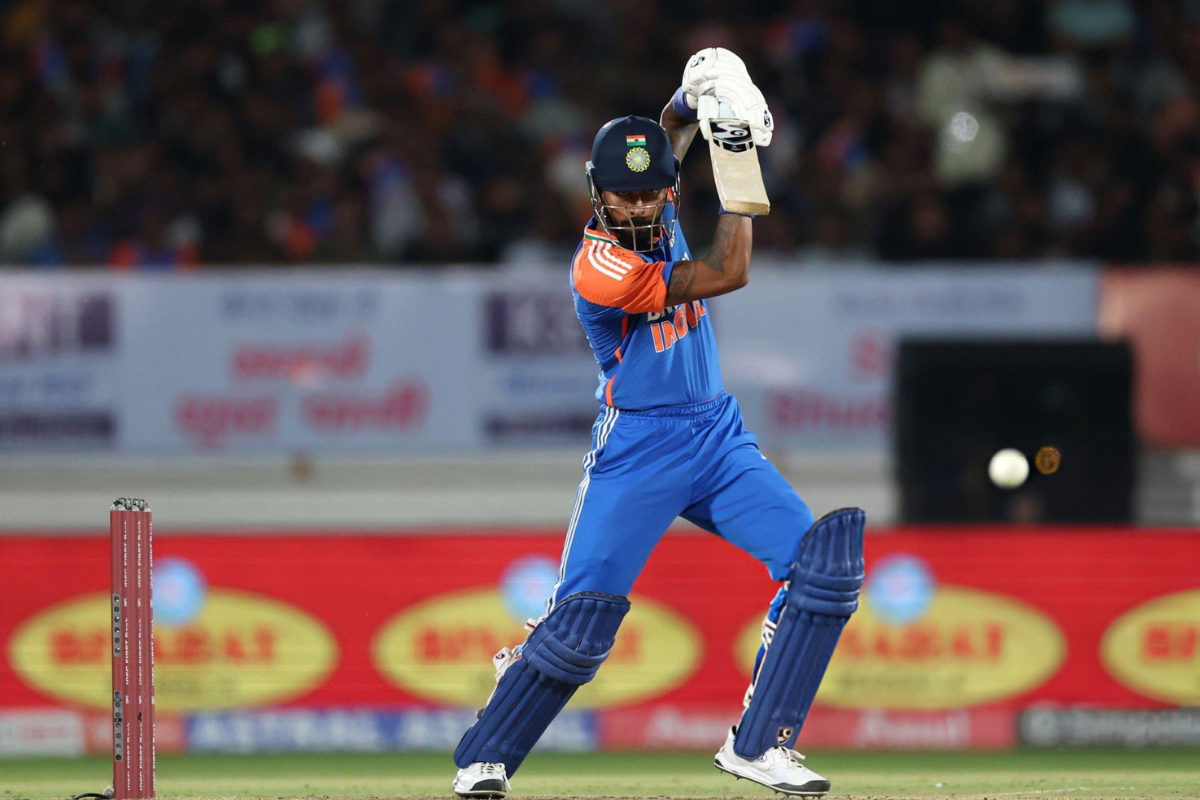
Hardik Pandya has slowly developed a chink in his armour.

The value Hardik Pandya adds in white-ball cricket is immense, for he single-handedly balances the XI. More than being an all-rounder, it’s the quality that sets him apart and makes him an indispensable asset. No wonder he remains India’s most crucial white-ball player, even if others contribute heavily.
As a batter, his biggest strength remains his ability to adapt to different situations and bat in various gears. He can rebuild the innings if early wickets fall or bat briskly if only a few overs are left. He has established himself as India’s problem-solver.
Usually a big hitter of the ball, Hardik Pandya has slowly developed a chink in his armour – hitting against pacers. While he still is a quality player against medium pace, Hardik has shown issues against high-pace hard lengths lately. He has been getting dismissed more often and can be cramped for room.
Since 2023, Hardik has averaged a mere 22.90 and struck at 147.32 against speedsters. More importantly, he takes around five deliveries for every boundary. Between 2020 and 2022, he averaged 27.91 and had a strike rate of 153.22 while hitting a boundary every 4.73 balls against fast bowlers.
His numbers against good length bowling are concerning. Since 2023, he has an average of 20 and a strike rate of 125 against good-length balls. On back-of-length deliveries, the all-rounder’s numbers get even worse, as he averages only 15.1 and strikes at 116.8 in this timeframe.
Teams have been smart enough to target him on these lengths consistently. Around 47% of his total deliveries against speedsters have come in this area since 2023. Clearly, Hardik’s weakness is well-known, and it might exacerbate in the upcoming times.
Unfortunately, Hardik decided to return to the Mumbai Indians (MI) ahead of IPL 2024 and played on bouncy Wankhede decks, which increased his issues. Since returning to MI in 2024, Hardik has an average of 17.35 and a strike rate of 151.28, taking as many as 5.13 deliveries for every boundary, against pacers in IPL.
On good length balls, Hardik averages 22 and strikes at 118.9 in the league. On short-of-length ones, his average falls to a mediocre 11.4, even if he maintains a decent 142.5 strike rate. Clearly, he has struggled to get going.
However, MI have been prudent with Hardik’s usage, which has been possible due to Naman Dhir’s availability. Dhir has shown an incredible skill set against pacers and has been highly attacking against them. He has a strike rate of 188.63 and a balls-per-boundary ratio of 3.45 against pacers in IPL.
Since IPL 2024, Hardik has batted 10 times at No.5 and nine times at No.6, which are 76% of his total innings. On the other hand, Dhir has played three innings at No.6 and nine at No.7, making 63.15% of his total outings. So, he has acted as a shield for Hardik by taking down pacers.
There were 11 instances where Dhir batted just below Hardik in IPL 2025. Even if the two didn’t bat much together, the thought process behind the move was understandable. Hardik had a cushion in the form of Dhir, which worked in his favour, and MI got their planning correct.
Hardik Pandya remains India’s most crucial player, and the management must ensure a similar cover in the Asia Cup 2025. Pace-hitters should surround him to maximise his batting potential. The pitches in the UAE can be slightly slow, which will increase the need for pace hitters.
While selecting the squad, India should have at least two pace-hitters to help Hardik settle and get some protection. That’s where Rinku Singh becomes important. Despite his recent middling form, he remains one of the better players of pace and can bat below Hardik as Dhir did at MI.
Even though he has endured a lean patch, Rinku has a strike rate of 158.64 and a balls-per-boundary ratio of 4.40. Dhruv Jurel can be another option in this category, as he displayed good application against high-pace bowling in IPL 2025, and can act as a backup wicketkeeper. If there’s no spot for any other pace-hitter, India should be prudent to nail the entry points of both players.
Hardik has shown limitations that are too hard to ignore. Still, he remains valuable due to his expertise. All India need is a stable partner around him to work it out.
Stats Credit: Himanish Ganjoo’s tool.